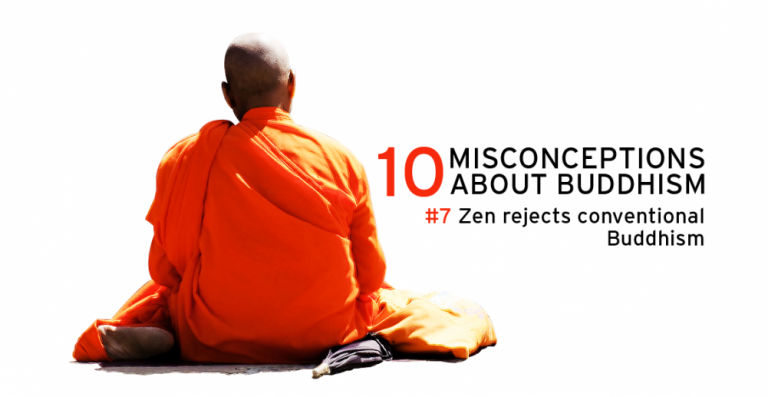The literature of Zen, especially as we know it in the West, often portrays its adepts as iconoclasts who reject the conventional norms and restrictions of the Buddhist tradition. Zen masters are said to have burned statues of the Buddha for firewood and scorned the written sutras.
When the Chinese master Yunmen Wenyan was asked, “What is the Buddha?” he replied, “A dried turd.” When Linji Yixuan, the eponymous founder of the influential Rinzai school (Linji zong) of Chinese Zen (Chan), was asked what monks should do if they encountered the Buddha, he shouted, “If you meet the Buddha, kill him!”
Related: Buddhism: Philosophy or Religion?
In 1964, Ch’unsong, a modern Korean Zen (Son) monk renowned for his iconoclasm, was invited to the presidential palace to give a dharma talk at the birthday celebration for Yuk Yong-su, the wife of Korean President Park Chunghee and a devout Buddhist laywoman. Ch’unsong ascended the dais and sat silently for over a half hour, leaning on his staff. When it was obvious that his audience had lost all patience, he held his staff up over his head and shouted, “This is the day the mother of the First Lady split open her vagina!” He then descended from the dais and walked off without saying another word. Needless to say, he was not invited back.
A Zen master’s awakening is said to transcend all the conventional dichotomies of right and wrong, good and evil, moral and immoral. This experience frees him to engage in what the tradition calls “unconstrained conduct” (wu’ai xing), which allows its enlightened monks to do iconoclastic things like frequent bar and brothels. The Hongzhou school, on what was then the wild Sichuan frontier of China, was especially known for such iconoclasm; many of the portrayals of Zen masters striking, shouting at, and kicking their students are associated with Hongzhou masters. Derived from Mazu Daoyi and his successors, the Hongzhou school claimed that all actions were equally manifestations of the enlightened mind and that conventional ethical observances placed artificial restraints on the mind’s free functioning.
Such “unconstrained conduct,” however, was subject to withering criticism by certain other factions within the Zen tradition itself. Guifeng Zongmi, a successor in the Heze lineage that traces itself back to the Sixth Patriarch Huineng, blasted the Hongzhou school for fostering what he considered to be dangerous antinomian tendencies.
The notion that the vast majority of Zen monks are engaged in unconstrained conduct is belied by the fact that Zen monasteries adhere to strict sets of regulations that the tradition itself developed. These codes are the so-called “rules of purity,” or qinggui, a genre of Zen literature that was intended to provide an indigenous disciplinary code distinct from the imported monastic discipline of India. The source of many of the qinggui’s rules and regulations, however, is in fact the normative Indian Vinaya tradition.
Quinggui codes cover everything from the monthly and annual celebrations and festivals, down to the minutiae of daily life in the monastery and the specific duties of the monastery’s administrative monks. In modern Korean monasteries, the daily life of Zen monks is so rigorously structured around the 10 to 14 hours typically allocated to formal sitting meditation that they are permitted no time even to read or chant, let alone to hit the local bar. The “unconstrained conduct” of Zen is a literary trope, not a pervasive practice. It is the exception, not the rule.
Related: The Lost Tradition of Tibetan Zen
Despite Zen’s own claim that it “does not rely on words and letters” (buli wenzi), most Zen monks have engaged in extensive study of Buddhist scriptures and primers of Zen before beginning their training in the meditation hall. Indeed, the school that produced the largest body of written literature of any tradition of East Asian Buddhism can hardly be considered bibliophobic. This literature includes such uniquely Zen genres as discourse records (yulu), “transmission of the lamplight” lineage histories (chuandeng lu), and anthologies of Zen precedents (gong’an; Japanese, koan), all of which extensively cite sutras to validate Zen views and practices.
“Not relying on words and letters” is a statement of Zen’s claim about its own pedigree: a school that draws its authority not from the written sutras of Buddhism but from its direct connection through successive generations of patriarchs and teachers to the mind of the Buddha himself.
[This story was first published in 2014]
Thank you for subscribing to Tricycle! As a nonprofit, we depend on readers like you to keep Buddhist teachings and practices widely available.
